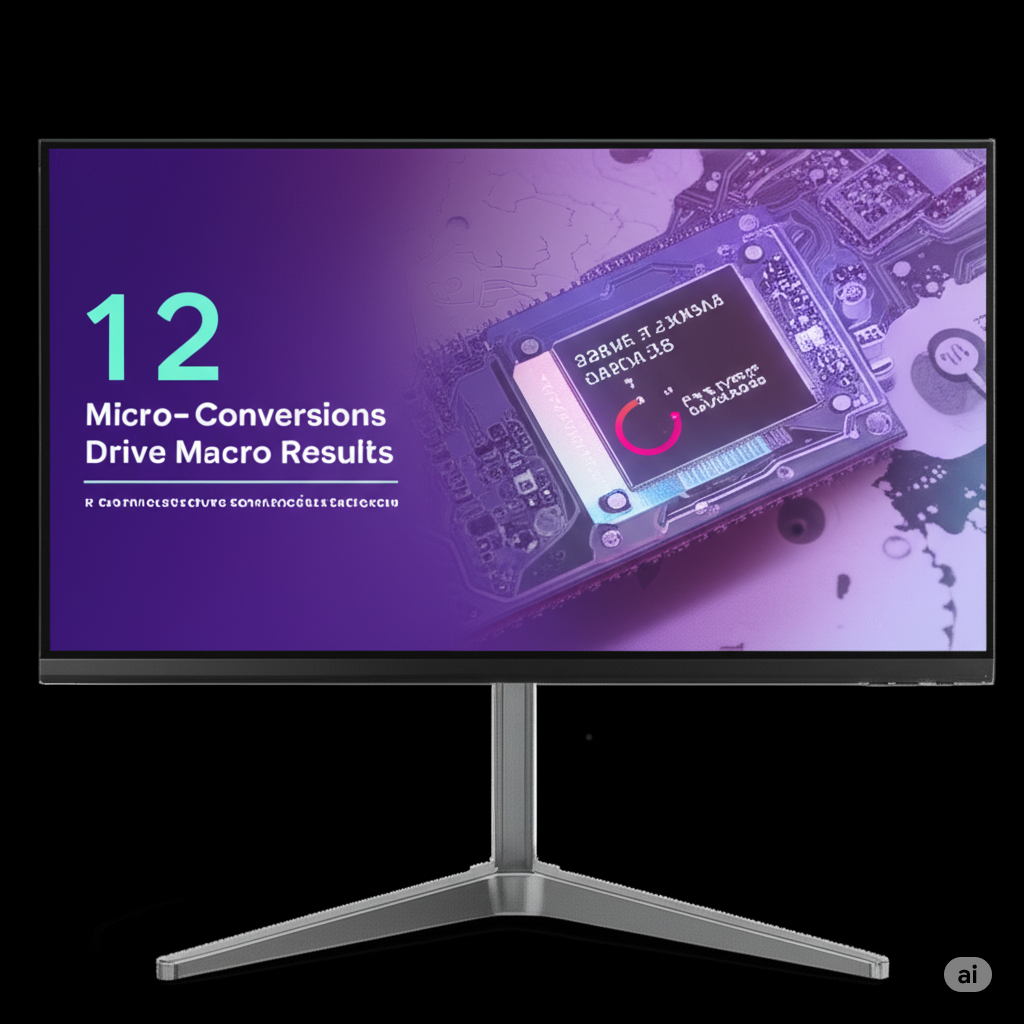In the world of performance marketing, big wins are often the result of small, strategic steps. While the ultimate goal might be a purchase, subscription, or lead submission, these macro-conversions are rarely the first touchpoint a customer has with a brand. Instead, they’re the culmination of a series of smaller interactions—known as micro-conversions.
Understanding and optimizing these micro-conversions can significantly improve your marketing performance, reduce acquisition costs, and boost your ROI. Let’s explore how.
What Are Micro-Conversions?
Micro-conversions are small, measurable actions that users take on the path to completing a larger, primary conversion goal. These might include:
-
Clicking on an ad
-
Watching a product video
-
Signing up for a newsletter
-
Adding a product to a cart
-
Downloading a resource
-
Spending a certain amount of time on a page
Each of these actions signals a growing interest and intent, offering valuable data that marketers can use to guide users down the funnel more effectively.
Also Read: Advanced Performance Marketing Training
Why Micro-Conversions Matter
1. They Reveal Intent Early
Micro-conversions give you early signals about user behavior and intent. For example, a visitor downloading a whitepaper shows informational interest, while adding an item to a cart suggests commercial intent. These signals help you segment audiences and serve more relevant messages at each stage of the funnel.
2. They Improve Attribution Models
Attribution isn’t just about who gets credit for the final sale. It’s about understanding the complete customer journey. Micro-conversions allow for a more nuanced attribution model that recognizes the influence of top- and mid-funnel activities—often overlooked in last-click models.
3. They Identify Funnel Bottlenecks
Tracking micro-conversions helps pinpoint where users drop off. Are they engaging with your ads but not clicking through? Are they filling their carts but abandoning before checkout? These insights help identify and fix friction points in the customer journey.
4. They Drive Smarter Retargeting
Micro-conversion data enables more effective retargeting strategies. For instance, users who watch 75% of a product demo video can be retargeted with a special offer, while newsletter subscribers might receive a drip campaign guiding them toward a purchase.
5. They Enhance Optimization and A/B Testing
When you’re testing new creative, landing pages, or user flows, waiting for final conversions can take time. Micro-conversions provide quicker feedback, allowing faster iterations and more agile optimization.
From Micro to Macro: Putting It All Together
Let’s consider an e-commerce example:
-
A user clicks on a Facebook ad (micro-conversion).
-
They browse the product page and watch a 30-second demo video (micro-conversion).
-
They sign up for a 10% discount email (micro-conversion).
-
They return via the email link and make a purchase (macro-conversion).
Each micro-conversion played a role in nudging the user forward. Without tracking and optimizing for these, marketers might miss opportunities to influence the journey and increase conversions.
How to Track and Leverage Micro-Conversions
-
Define Your Funnel Stages: Map out the typical customer journey and identify key micro-conversions at each stage.
-
Set Up Event Tracking: Use tools like Google Analytics, GA4, or customer data platforms (CDPs) to capture these actions.
-
Create Segments Based on Behavior: Group users based on which micro-conversions they’ve completed.
-
Test and Personalize: Use the data to A/B test messaging, retargeting, and offers based on micro-conversion behavior.
-
Report Holistically: Use dashboards that visualize the full funnel—not just end conversions—to understand performance more deeply.
Final Thoughts
In performance marketing, success rarely hinges on a single moment. Instead, it’s a series of well-orchestrated touchpoints—micro-conversions—that guide users toward taking action. By paying attention to these moments and optimizing for them, marketers can unlock deeper insights, reduce churn, and ultimately drive macro-level business results.
1. What is a micro-conversion in digital marketing?
A micro-conversion is a small, measurable action a user takes on their way to completing a primary (macro) conversion. Examples include email sign-ups, video views, clicking on CTAs, or spending time on a page.
🔹 2. How are micro-conversions different from macro-conversions?
Macro-conversions are final goals like a purchase or lead submission, while micro-conversions are the smaller steps users take leading up to that goal. Micro-conversions indicate user engagement and intent.
🔹 3. Why should I track micro-conversions?
Tracking micro-conversions helps identify how users move through your funnel, where they drop off, and which interactions influence final conversions. This improves targeting, optimization, and attribution.
🔹 4. How can micro-conversions improve ROI?
By identifying and optimizing key micro-conversions, marketers can reduce wasted spend, retarget more effectively, and nudge users more efficiently toward completing a macro-conversion—resulting in a higher ROI.
🔹 5. What are some common examples of micro-conversions?
-
Click-throughs on ads
-
Email newsletter sign-ups
-
Product page views
-
Adding items to a cart
-
Downloading eBooks or guides
-
Watching a video beyond a certain duration
🔹 6. How can I track micro-conversions on my website or app?
Use tools like Google Analytics, GA4, Tag Manager, or CRM systems to set up event tracking for specific user actions that represent micro-conversions.
🔹 7. Do micro-conversions help with retargeting strategies?
Yes. Micro-conversion data lets you segment users by behavior and intent, allowing for highly targeted retargeting campaigns that are more likely to convert.
🔹 8. Can micro-conversions help improve content or ad performance?
Absolutely. Monitoring actions like click-throughs, scroll depth, and time on page gives insight into what content resonates with users, enabling better content creation and ad optimization.
🔹 9. Are micro-conversions useful in B2B marketing?
Yes. In B2B, where the sales cycle is longer, micro-conversions (e.g., webinar sign-ups, whitepaper downloads) are crucial indicators of interest and can guide lead nurturing strategies.

